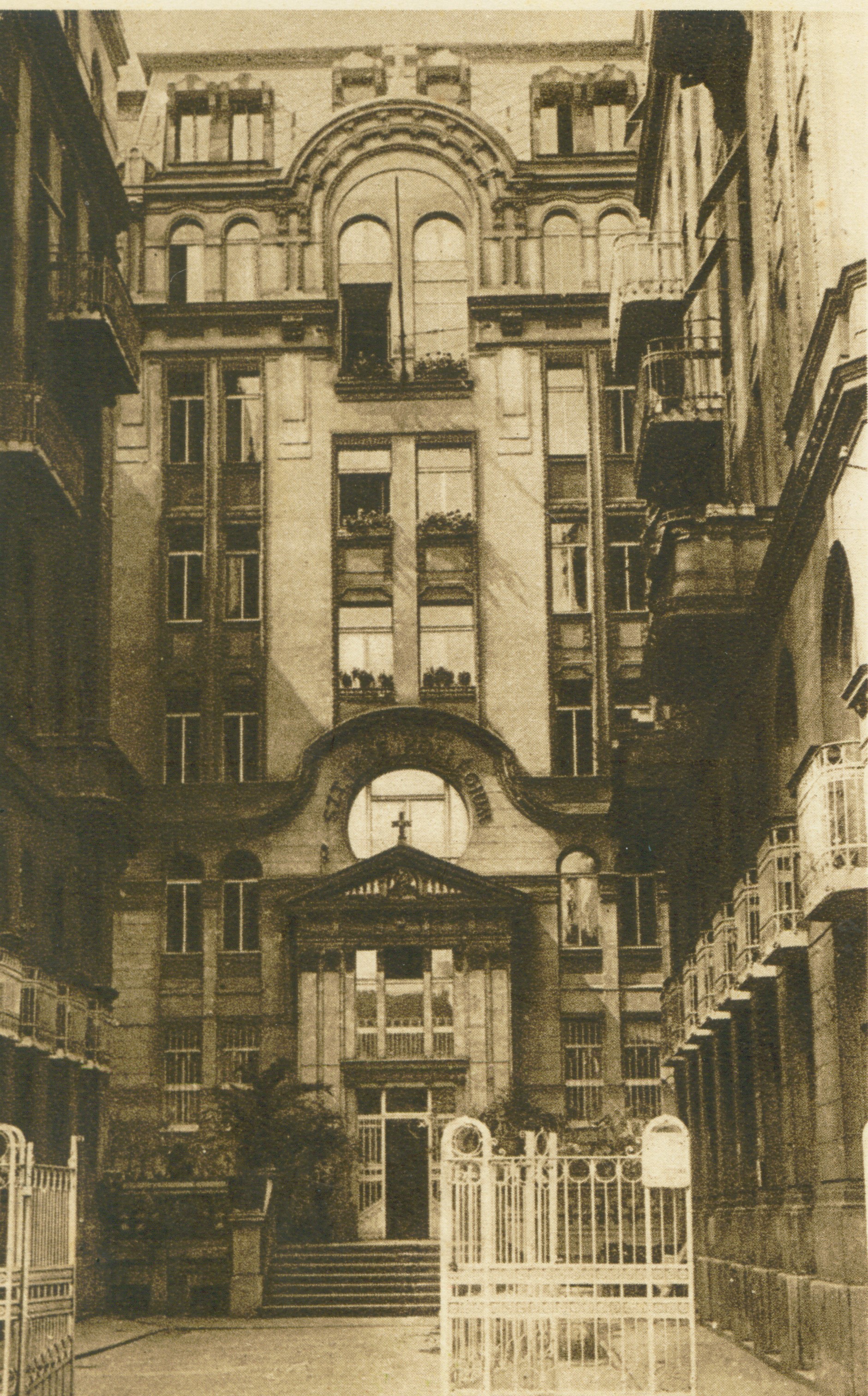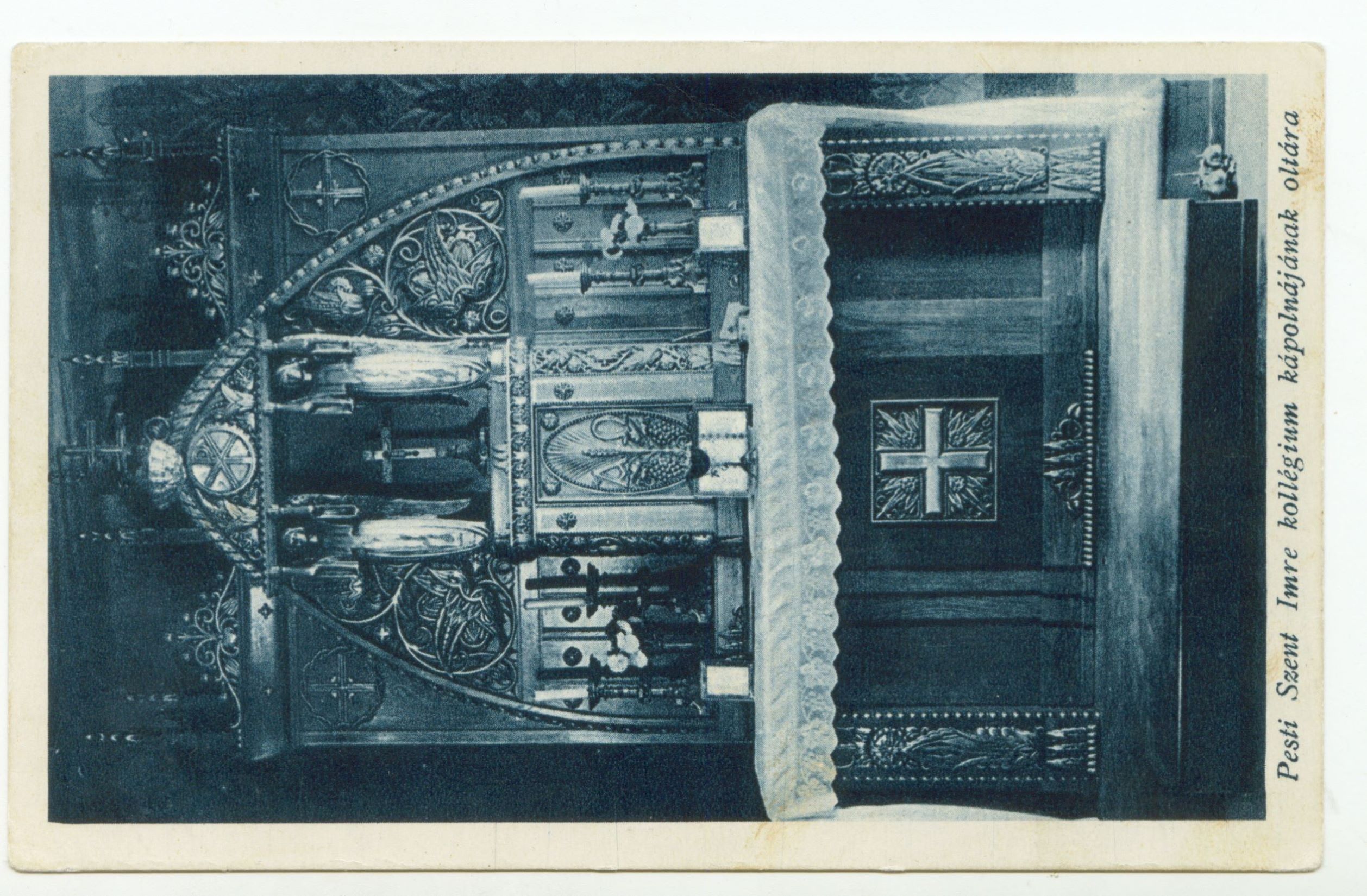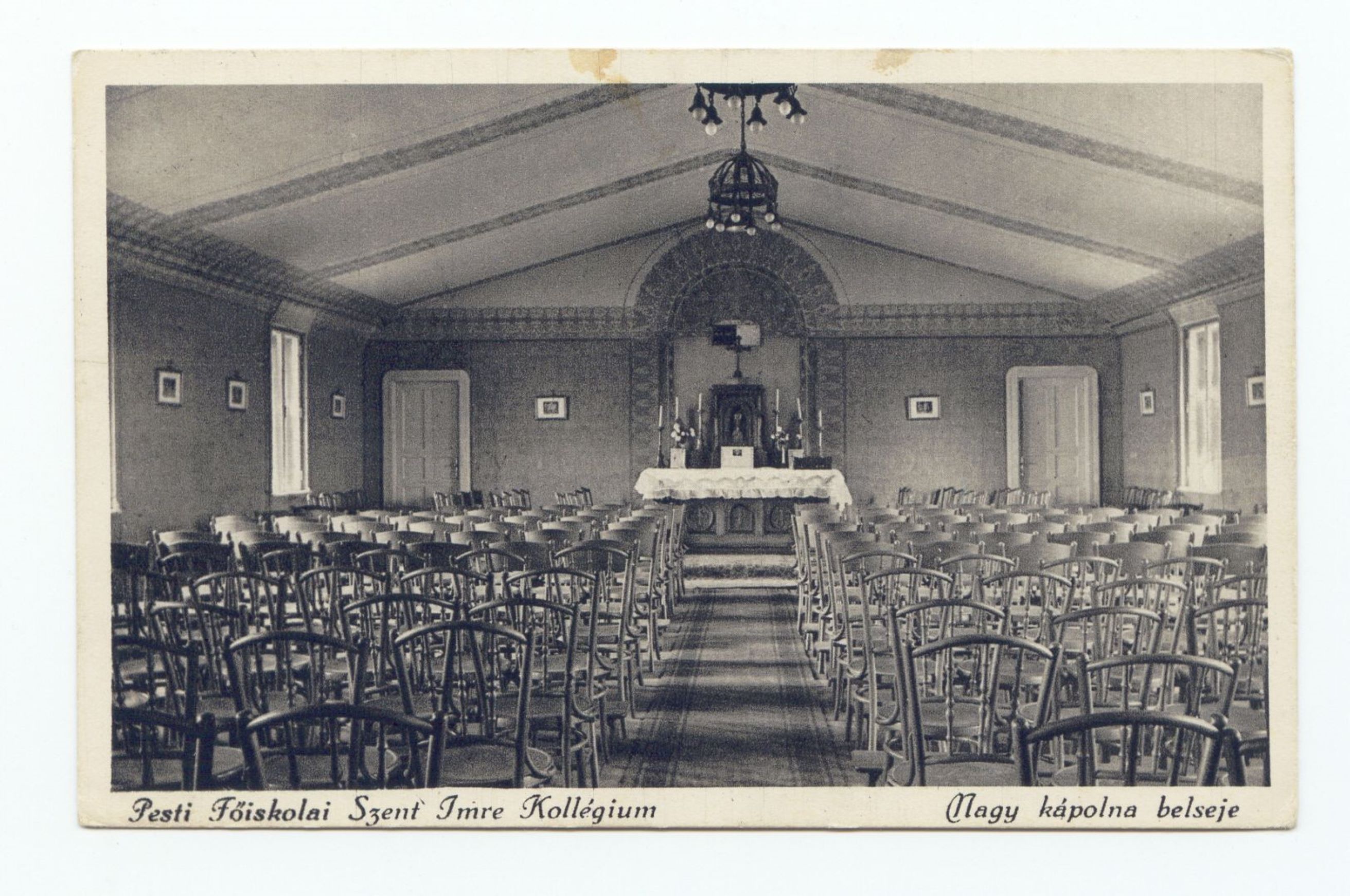On 1 September 1900, Gyula Glattfelder, a religious teacher, and later the bishop of Csanád, the president of the Saint Emeric Circle, established the Saint Emeric Dormitory from his own property. The initiative, which aims to help housing problems for Catholic students and college students, first ran in the building at 20 Irányi Street, in the city centre. Here, two rented flats were able to accommodate 10 people, and later, with another two flats, a total of twenty-four students could be housed.
To operate the Saint Emeric Dormitory, Gyula Glattfelder founded the Catholic College Boarding School Association with Count János Zichy in 1901, which operated from 1911 until its dissolution in 1949 as the Saint Emeric College Boarding School Association. In August 1902, the association purchased the three-storey house at 22 Üllői Road, to which the dormitory moved in October. Initially, 54 students lived there, but soon this space also proved to be scarce. Thus, the 1st and 2nd floors of the adjacent building at 24 Üllői Road were also rented. The number of students in 1905 was already 150; depending on the financial situation, a quarter of the students received discounted or free board.

The Saint Emeric Dormitory moved to the building at 22 Üllői Road in 1902 (Source: FSZEK Budapest Collection)
The increased demands and expansion can be clearly seen in the fact that the Saint Emeric Dormitory in Buda was also established in 1908 in the 1st (later 11th) District's Fehérvári (later Miklós Horthy, then Béla Bartók) Road. The dormitory also expanded in Pest: between 1909 and 1913, the association also owned the property at 9 Veres Pálné Street in the city centre, which was originally built as an apartment building, designed by Ödön Lechner and Gyula Pártos on behalf of Kecskemét. To make it suitable for dormitory purposes as well, alterations were made to it, with study, reading, dining and dorm rooms designed for students. Finally, in the summer of 1913, the building was renovated and sold.

The building at 9 Veres Pálné Street was owned by the association operating the Saint Emeric Dormitory between 1909 and 1913 (Source: Fortepan/Budapest Archives, No.: HU.BFL.XV.19.d.1.05.075)
Due to the constantly growing demands and the expansion of the number of students, another move took place in 1912: the association bought the newly built 43-45 Ráday Street building, which has become the final home of the Saint Emeric Dormitory in Pest. The five-storey house was designed by architect Albin Siegel and built by master-builders Reisenleitner and Lukoviczky.

The Saint Emeric Dormitory in Pest moved to Ráday Street in 1912, the recording was made in 1920. The building was built according to the plans of the architect Albin Siegel (Source: Ferencváros Local History Collection)

Detail of the main facade of Ráday Street in a photo taken in 1926 (Source: Ferencváros Local History Collection)
The cellar and basement housed food chambers, warehouses and a heating house, kitchens, a large restaurant, a lounge, a sacristy and a chapel named after Saint Emeric. Its murals were made by the painter Sándor Nagy; unfortunately, the chapel was completely destroyed in 1945.
On the ground floor were additional warehouses, a kitchen, a pantry, a prefect apartment, a porter's room, forty-two dorm rooms, and restrooms. Upstairs were kitchens, maids rooms, restrooms, prefect apartment, and sixty student dorms per floor. The director's apartment was on the second floor and there were laundry rooms in the attic.

The main entrance to the dormitory on a contemporary postcard
The building was inaugurated in November 1913, then the Saint Emeric Dormitory in Pest was officially the largest and one of the first-rated dormitories in the country. Initially, only Catholics could apply for the 300-student institution, but later Protestants were admitted in smaller numbers.

Staircase detail in the dormitory (Source: Ferencváros Local History Collection)
During the Hungarian Soviet Republic, on 22 March 1919, on the instructions of György Lukács, People's Commissar, the building was expropriated by the new authorities and renamed to Ervin Szabó College Student Home. The children of the parents who were called “bourgeois,” were expelled from the institution, replaced by proletarian youth and rabbinical students. The archives, the library and the documents of the institution were destroyed and the cross was demolished from the facade. The former management of the dormitory then left the building.

Altar of the dormitory chapel (Source: Ferencváros Local History Collection)
Despite all this, the students of the dormitory played a significant role in the anti-regime organisation: weapons were collected in the cellar and on 1 August 1919, the national flag was first hoisted here in the capital. Students attended the arrest of the Peidl government, reigning 1-6 August 1919, and the formation of a gendarmerie battalion. On 5 October, following a signal from dormitory patrols, U.S. General Bandholtz prevented Romanian troops from looting the Hungarian National Museum.
After the political turn, in 1919 Mihály Marczell took over the management of the institution. Under his direction, the dormitory has been expanded with well-developed, with modern infrastructure, amenities and cultural services. There was also a lounge, games and lecture hall, a library, a chapel, modern baths, a scout home, a technician and radio room, and a photographer's lab. The institution also housed the Congregation of Mary and a scout team, as well as a choir and orchestra. In addition, a waterworks and a boathouse in the Danube branch of Soroksár; in Ábrahámhegy, on the shores of Lake Balaton, a student holiday home served the recreation of the dormitory youth.

The lounge of the dormitory on a contemporary postcard

The interior of the chapel in 1935 (Source: Ferencváros Local History Collection)

The flag consecration on 12 November 1927 was a significant event in the life of Saint Emeric Dormitory in Pest (Source: Tolnai Világlapja, 23 November 1927).
Examining the composition of the students, it can be said that the vast majority were law and medical students, followed by technicians, humanities and economists. Several later famous public figures were also collegiate here, among others Ferenc Csík, an Olympic swimming champion was also a resident of the institution. In the early 1940s, the annual alimony was 800 pengos in double rooms and 850 pengos in single rooms.
After Mihály Marczell, in 1936, dr. József Koszterszitz became the head of the dorm. Koszterszitz, better known by his pen name, Father Koszter, was one of the most famous and popular priestly educators of the age. His popularity was mainly due to his character education books for young people.

Portrait of József Koszterszitz, Father Koszter (Source: Zászlónk, December 1941)
He was previously a prefect of the Ráday Street Dormitory, then he became the director of the Saint Emeric Dormitory, which was established in Sopron, after which he returned to the head of the Saint Emeric Dormitory in Pest. He placed great emphasis on further strengthening the Christian-national educational character of the institution. Educational volumes co-written and edited by the Dormitory leaders have also served this purpose: Pure Masculinity in Universities, Esto vir!, Nos Rector.

The dance evening of the dormitory in 1933 in the Pannónia Hotel on Rákóczi Road. József Koszterszitz can be seen in the middle among the students (Source: FSZEK Budapest Collection)
After World War II, the new power that was emerging was, of course, seen as an opponent of the values of Koszterszitz and the Dormitory. In 1946, the left-wing Ifjúság és Új Szó (the Hungarian-language newspaper of the Soviet army) launched attacks on his persona, demanding his replacement and prosecution. The 19 July 1946 issue of Ifjúság reported on Koszterszitz's dismissal from the post of director.
He was temporarily succeeded by József Győző Nagy in this position, but by then, it was already clear that the days of the institution were numbered: in 1948, following a state measure, the Saint Emeric Dormitory in Pest was abolished, the association operating it was dissolved and the property was nationalised.
During the decades of communism, the dorms of Eötvös Lóránd University and later of the Károly Marx University of Economic Sciences used the building on Ráday Street. Nowadays, the Ferenc Földes Dormitory of the Corvinus University, the Dormitory of Social Theory and several specialised dorms operate here.

The Ráday Street building still operates as a dormitory (Photo: Balázs Both/pestbuda.hu)

The facade of 43-45 Ráday Street today (Photo: Balázs Both/pestbuda.hu)
The Saint Emeric Dormitories were the defining institutions of the intellectual life of Hungary before 1945. The Saint Emeric Dormitory in Pest was one of the most significant among them; the beautiful building of Ráday Street, which can still be seen today, reminds the citizens of these memories.
Cover photo: The main facade of the Saint Emeric Dormitory in Pest in 1920 (Source: Ferencváros Local History Collection)




































Hozzászólások
Log in or register to comment!
Login Registration